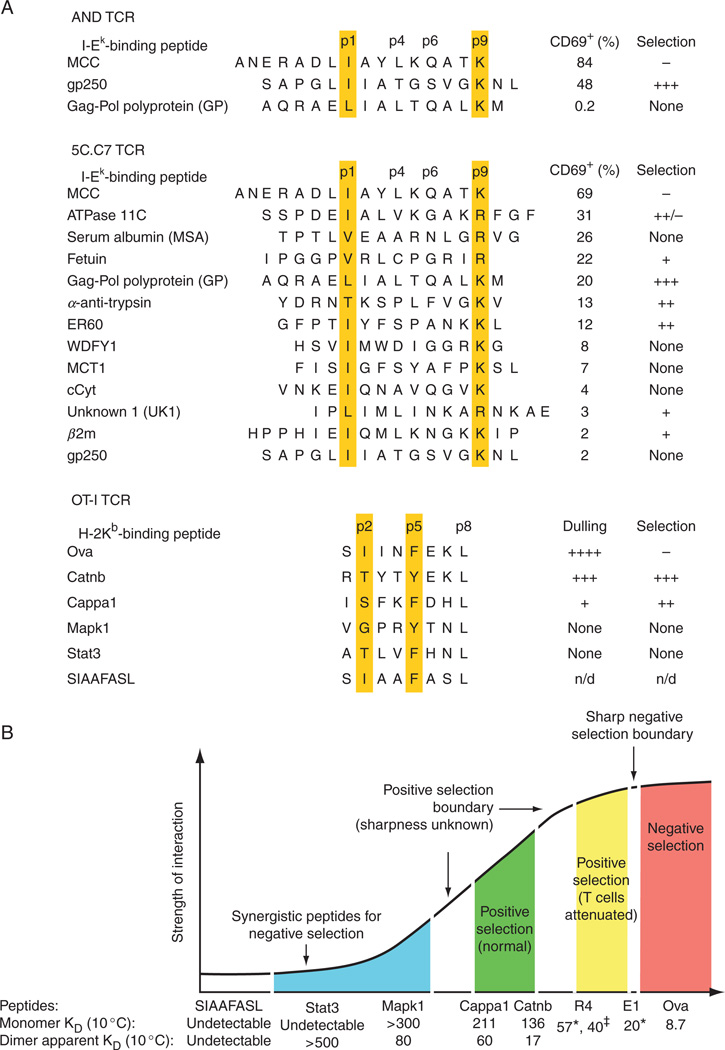Fig. 2.
Summary of sequence and thermodynamic data for the self-peptides with reactivity toward the AND, 5C.C7, and OT-I TCRs. (A) Amino acid sequences of a subset of the known I-Ek-bound self-peptides41 and H-2Kb-bound self-peptides (Ref. 37; the Cappa1 peptide was originally described in Ref. 36). I-Ek-binding peptides are shown in their predicted I-Ek-binding register; MHC pocket residues are highlighted.42,43 The peptides’ reactivity toward the indicated TCR was measured by CD69 upregulation of DP thymocytes bearing that TCR toward the indicated peptide presented by APCs or platebound I-Ek.39,40 For OT-I, reactivity was measured in terms of CD4 CD8 coreceptor downregulation, or dulling.37 The ability of these peptides to positively select T cells bearing the indicated TCR was assessed: for AND, in reaggregate thymus cultures with the ANV41.2 cTEC cell line as APCs; for 5C.C7, in 5C.C7 Ii−/− fetal thymus organ cultures (FTOCs); and for OT-I, in OT-I TAP−/− FTOCs. (B) A summary of affinities of the OT-I TCR for different peptide–H-2Kb and a schematic of the relation between affinity and selection outcome. Positive selection data for E1 (EIINFEKL) and R4 (SIIRFEKL) are from Ref. 44, positive selection data for the self-peptides are from Ref. 37. Affinity measurements are from Ref. 38 except for ☼ (Ref. 28), at 25 °C, and ‡ (Ref. 32), also at 25 °C.

